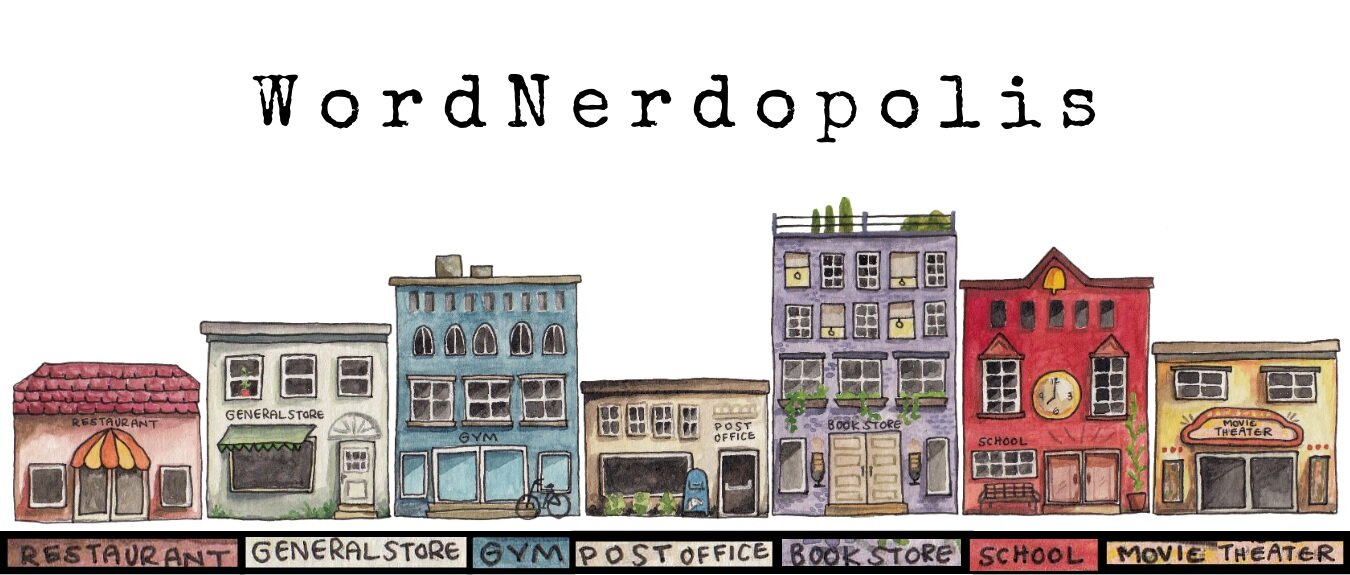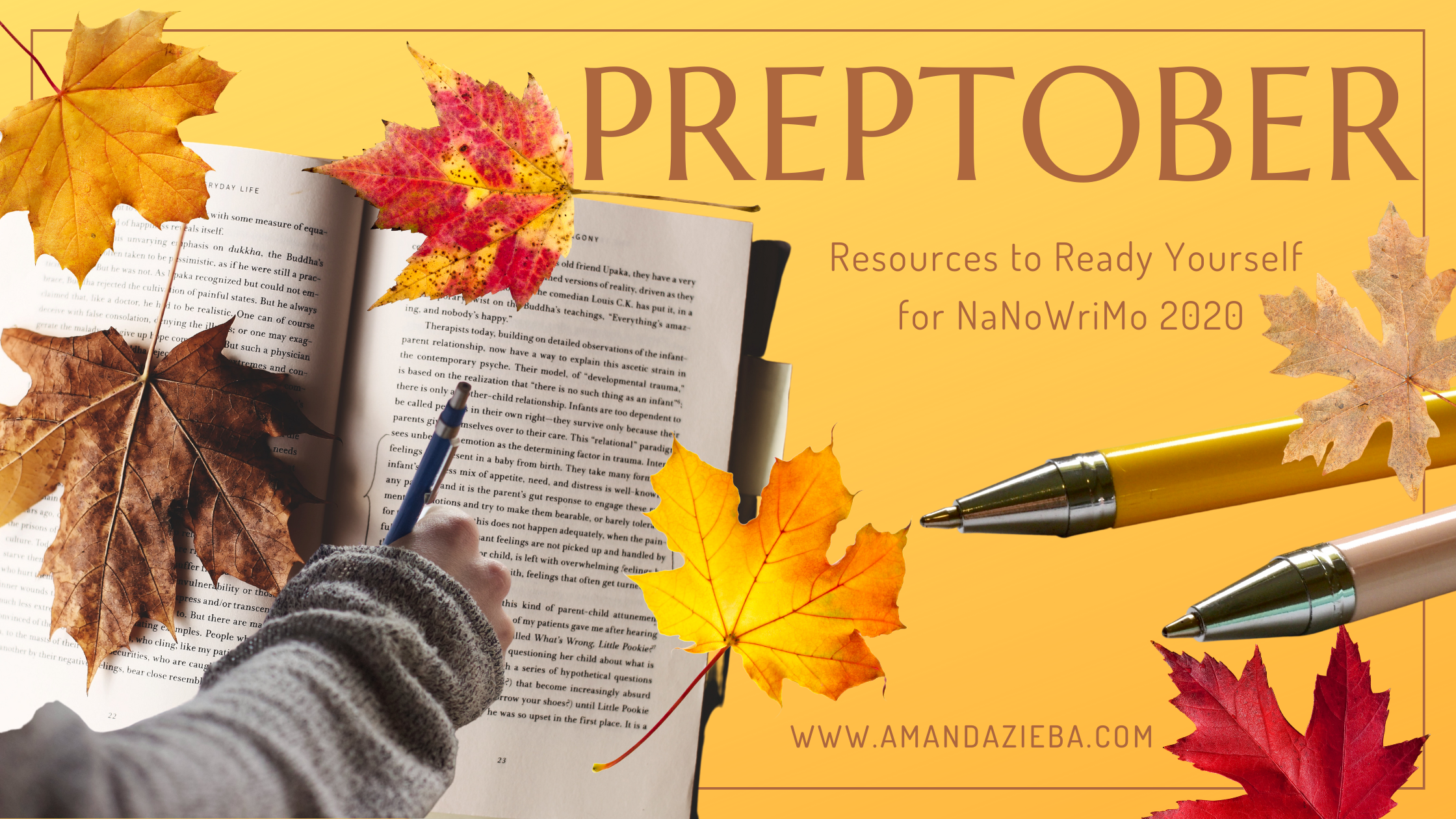Preptober: Resources to Ready Yourself for NaNoWriMo
NaNoWriMo is coming.
In case you are new to the writing world, or aren’t a fan of acronyms, I’ll spell it out for you. NaNoWriMo stands for National Novel Writing Month.
Every November, writers strive to write 1,667 words a day for a grand total of 50,000 words by the end of the month. This is the equivalent of the average sized novel. It’s a huge challenge, but it can be fun too. I personally love these kinds of time-specific goals. I love creating a window of opportunity for myself to really focus and make progress on a project or manuscript.
Some people dive willy-nilly into their drafting on November 1st. I have tried that strategy and found that it can be exhilarating, but also, not super productive. I have had much more success when I planned ahead, when I prepared. Other authors agree and that’s why October, in the writing world, has been nicknamed, PREPTOBER.
In the spirit of preparation, I’m sharing a list of resources you can use to prepare yourself for NaNoWriMo success. I hope that you’ll give one (or some) of them a try and also that you have a really great writing season, no matter how you choose to make progress on your projects.
Workbooks
Novel writing workbooks are a great way to work through the big ideas of your novel before you actually sit down to write. This way you won’t have to “figure out” the nuts and bolts or mechanics of your story world, character motives, or plot twists WHILE you are actually writing. You can save your brain space for beautiful prose, because your workbook work will have forced you to think those things through ahead of time. I have created a program like that, called Story Seedlings. Another workbook that I LOVE for this purpose is the Pre-Write Project, created by the eternally-helpful, Kristen Kieffer.
Story Seedlings is a digital product that includes 24 prompts that will help you construct your story, one scene at a time! Specific story elements that are covered include: Characterization, World Building, Conflict (internal/external) and Resolution. There are lots of tips, resources and advice built in along the way as well! Completing the prompts will also help you build an excellent daily writing habit which will serve you excellently once NaNoWriMo does begin.
The Pre-Write Project includes seven chapters, each containing a short introductory lesson and question-based activities that will help you develop key story elements such as characters, plot arcs, settings, themes, and your ideal reader. This workbook also includes a bonus section containing four chapters designed to help speculative fiction writers craft their story worlds.
Blog Posts with Helpful Advice/Strategies
If you aren’t sure how to actually sit down and write 1,667 words a day, the following blog posts will walk you through strategies, tips and mindsets will be a helpful place to start. These pieces have all previously appeared on my blog, but I wanted to include them here again in a curated list in case you are new to my blog and weren’t around when they were originally published, or in case you want a quick refresher.
This single trick and mindset has helped me crush my writing goals again and again! Partner this strategy with a music playlist and the hacks mentioned in this post to make the most of your writing time so you can reach your word count goals.
Worried that you won’t make it through the daily word count challenge, let alone the month? Check out the purpose and motivation a word count calendar can provide you, in this post.
What does it mean to be a plotter or a pantser, and how to pick a path for yourself? This blog post explains it all.
Pre-Writing Activities
The folks over on Reedsy had this to say about Mood Boards, “While it may seem “frivolous,” mood boards, aesthetics, and playlists can actually be a great inspiration as you brainstorm. There’s just something about seeing the kind of clothes your character would wear, or the locations they’ll be traipsing around in, that gets the creative juices flowing. Technology’s made it easy to virtually “pin” these visual strokes of inspiration, so that you can turn back to them whenever you find yourself hitting a wall.” This can also be true for musical inspiration and using favorite movies for dynamic plot replication. I shared my own mood boards, tips on soundtracks and using other story plots as inspiration below.
If you are a visual learner or are deeply inspired by images, then read this post for ways to harness your personal mode of creating to the ultimate level.
Create a Manuscript Soundtrack
Make a playlist of songs that embody the mood of your theme, story and characters. Learn how and why it works in this post.
Watch a movie similar to the story you hope to create and then complete a conflict tracking chart like the one seen in this post. Use your observations to purposefully plot your characters internal/emotional and external conflict highs and lows!
Write-Life Prep
In addition to meal planning and scheduling in workouts (so you don’t head into the holidays a listless slob) many people choose to prep their family members and significant others that November, and with it, NaNoWriMo, is coming. If writing is important to you, it is important for the people in your life to respect the time you set aside to write too. If you are having trouble coming up with the write words, I mean, right words, you can borrow mine.
You might also decide you want to set up a personal NaNoWriMo Survival Kit or a special writing space. Both “treats” may help and encourage you to continue when the going gets tough.
Create a NaNoWriMo Survival Kit
In this post, Cassandra, of the Sacred Middle Blog, shares a great list of items to include in a a NaNoWriMo Survival Kit.
This post covers a few ways to create a home office that will increase your productivity.
Okay. That’s it! Obviously, you don’t need to do everything on this list to be prepared, but hopefully you found a few things that will help you prep for the big novel writing month ahead. If you have any additional tips and tricks that were not mentioned in this post, please put them in the comments so we can learn from you too!
Happy prepping!
If you liked what you read on my blog today (or are in search of weekly word nerd goodness) and would like to have it delivered to your inbox every Wednesday morning, you can sign up HERE. If you are interested in any of my email lists (with free goodies/downloads!) click the audience that best describes you: Writer. Teacher. Reader. As always, feel free to share this post with others you think might be interested via email, Facebook or Pinterest.
Finally, affiliate marketing is promoting a product or service in return for a commission. When you purchase a product or service through one of my links, I earn a small part of the sale. There is NEVER any extra cost to you. If you looked up the same product on the same site through another source besides my website, the price will still be exactly the same. 100% of the time.
I also NEVER link to products or services that I don't 100% believe in. I will never tout a company or their goods if they are disreputable or if I don't believe them to be worthy of your hard-earned money. In no way are my affiliate links a scam. (Language borrowed with permission from Kristen Kieffer on Well-Storied.com)

